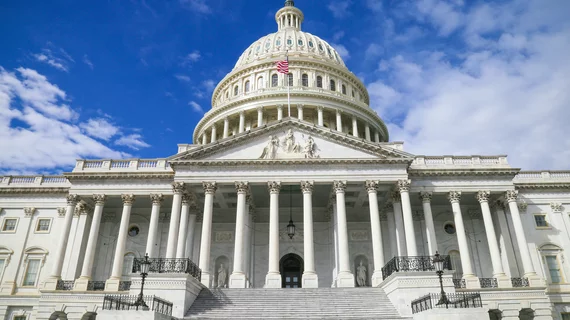FDA seeking upwards of $7B for 2024
The Food and Drug Administration has put in for a $7.2 billion chunk of the $6.9 trillion federal budget for fiscal year 2024 that President Joe Biden proposed March 9.
The latter has little to no chance of passage as is, given the GOP’s control of the House and the looming partisan fight over the president’s evident determination to raise the debt ceiling without making significant spending cuts.
However, both the White House’s proposal and the FDA’s request, posted the same day, will inform debate over spending priorities on Capitol Hill in the weeks ahead.
FDA says it needs the funding to “continue to leverage new and emerging technologies, recruit and support a highly skilled workforce and adapt oversight to new production and business models.”
The agency’s request reflects a 10% hike over—amounting to $372 million more than—the enacted level of the FDA’s allocation in fiscal 2023.
Commenting on the ask, FDA Commissioner Robert Califf, MD, says the amount will go toward numerous initiatives, including improving the safety and availability of medical products and strengthening oversight of tobacco products.
“The budget also provides a historic investment to strengthen the FDA’s food safety and nutrition capacity—especially for infants and young children, demonstrating the Administration’s ongoing commitment to these responsibilities,” Califf adds. “As always, our foremost focus is on the well-being of patients and consumers, and we look forward to continuing our work with Congress to help meet the critical public health challenges ahead.”
The announcement highlights other areas of activity the FDA deems as “high priority” and attaches dollar amounts it would like to designate for each.
Among these:
- Advancing access to safe and effective medical products: $23 million to counter the opioid crisis, $11.6 million to improve the medical device supply chain and mitigate shortages, $2.5 million to foster development of treatments for ALS (Lou Gehrig’s disease) and other rare neurodegenerative diseases.
- Reigniting the war on cancer: $50 million to advance the president’s Cancer Moonshot goals, in part by “enhancing efforts to improve evidence generation for underrepresented subgroups in oncology clinical trials” and by supporting “pragmatic and decentralized trials and our sources of evidence through patient-generated data, learnings and real-world evidence.”
- Strengthening public health and mission support capacity: $10 million in further investments in enterprise data and IT modernization, $16 million for regulatory and mission support functions within the Office of the Commissioner and $9.4 million for FDA buildings, facilities and infrastructure improvements.
Along with the funding requests, FDA is proposing a package of legislative goals. Noteworthy among these is the agency’s drive to do away with limitations requiring manufacturers to notify FDA on product interruptions only when a public health emergency (PHE) is underway or taking shape.
“Medical device shortages occur in many situations that fall outside of or are unrelated to PHEs, including natural or human-made disasters, recalls, geopolitical conflicts, production shutdowns and cybersecurity incidents,” the agency explains in the March 9 announcement. “These events can lead to device shortages that significantly impact patient care and jeopardize healthcare worker safety.”
Therefore, the FDA is seeking the requirement for manufacturer notifications at all times, as well as the authority to require and review risk management plans to help ensure that manufacturers are prepared for situations where their ability to manufacture product may be disrupted or may be insufficient to meet demand.”
On its own, the 2024 Biden budget proposal includes a plan for buttressing Medicare by extending the solvency of the Medicare Trust Fund by at least 25 years—“without cutting any benefits or raising costs for beneficiaries.”
The Biden budget also seeks to reduce overall healthcare costs by building on the Affordable Care Act of 2010, a.k.a. Obamacare, in part by permanentizing cuts in coverage premiums as laid out in the $740 billion Inflation Reduction Act of 2022.

